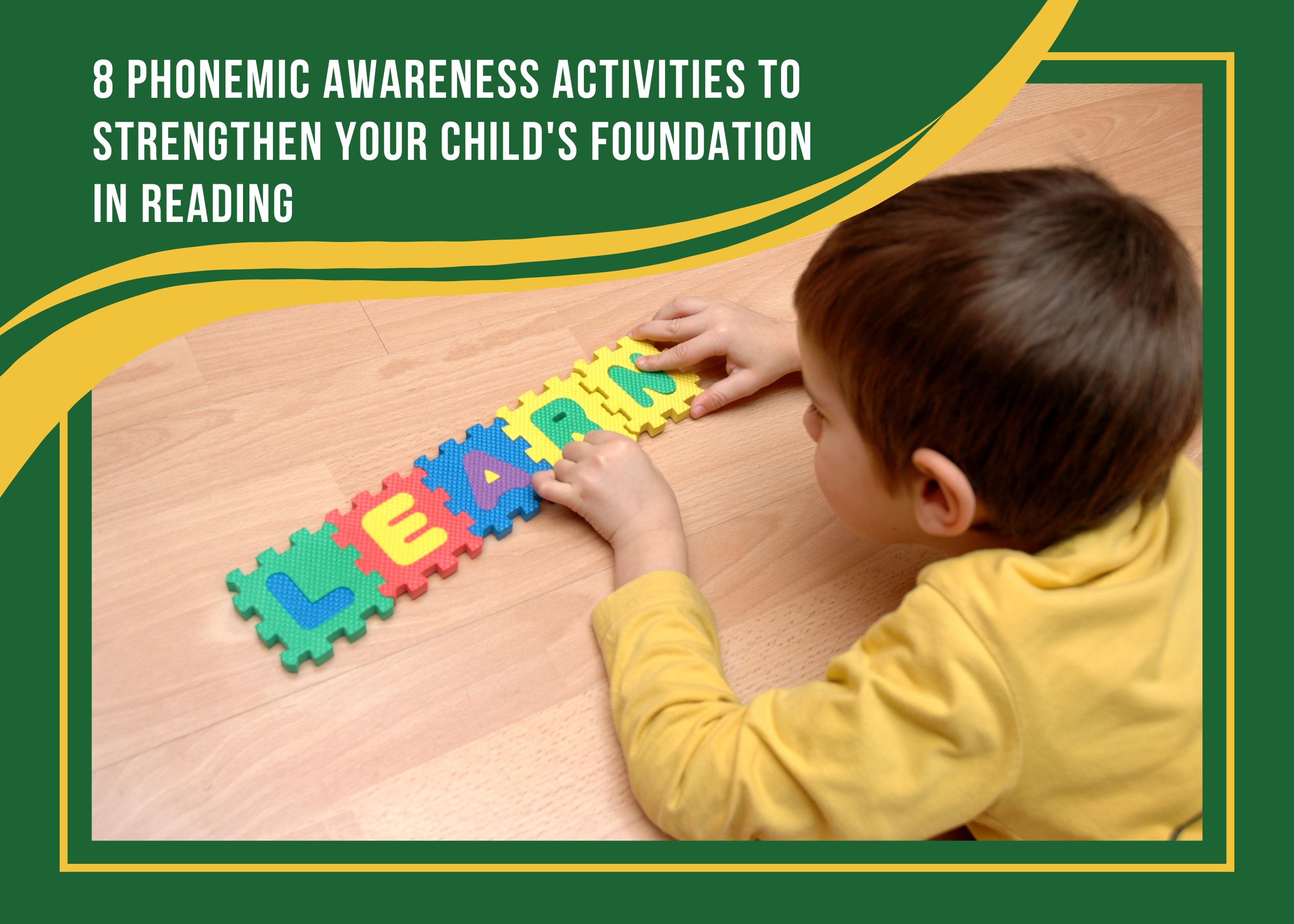8 Phonemic Awareness Activities to Strengthen your Child's Foundation in Reading
Phonemic awareness is an essential skill for learning to read and write. This term refers to hearing, identifying, and manipulating individual speech sounds in words. By developing phonemic awareness, children can break down complex words into smaller phonetic units, which helps them better understand the relationship between letters and sounds. Furthermore, phonemic awareness also allows children to optimize their phonics skills – the relationship between letters and their corresponding sounds.
Phonemic awareness can be cultivated through a variety of activities and exercises. Some simple phonemic awareness activities include clapping out syllables in words or blending phonemes to form new words. These exercises help children recognize important connections between language units like phonemes, syllables, and morphemes – or meaningful word chunks.
Here are eight phonemic awareness activities that you can do with your child at home to help them develop a strong foundation in reading and writing:
Clapping out syllables
This phonemic awareness activity is simple yet effective. To begin, say a word, such as "elephant." As you say the word, clap your hands for each syllable. In this case, you would clap once for "e," twice for "l," three times for "e," and four times for "phant." This activity helps children identify how many syllables are in a given the word and how to break words down into smaller phonetic units.
Segmenting words into phonemes
This phonemic awareness activity builds on the previous by segmenting words into their phonemes, or speech sounds. To segment phonemes, say a word out loud and then break it down into separate sounds. For example, the word "cat" is made up of three phonemes: /k/-/a/-/t/. Once your child has mastered segmenting phonemes in simple one-syllable words, you can move on to more complex multi-syllabic words.
Blending phonemes
This activity is the inverse of the previous one. Instead of breaking words down into phonemes, you will be blending phonemes to create new words. To blend phonemes, say the phonemes out loud one after the other and then see if your child can guess the word you are trying to say. For example, you could say the phonemes /b/-/l/-/u/-/e/, and your child should be able to identify the word "blue."
Identifying rhyming words
This phonemic awareness activity helps children identify words with the same ending sound. To begin, say a word out loud and then ask your child to think of another word that rhymes with it. For example, if you say the word "cat," your child might consider of words like "hat," "bat," or "rat" that all rhyme with "cat." This is an excellent way to help children phonetically decode words.
Manipulating phonemes in words
To manipulate phonemes, you can change a word's initial, final, or middle sound. For example, if you start with the word "bat," you could change the initial sound to create a new word like "hat." Or you could change the final sound to create a new word like "bake." This activity helps children understand how changing just one sound in a word can create an entirely new word.
Identifying beginning sounds
This phonemic awareness activity helps children identify the initial sound in a word. To begin, say a word out loud and then ask your child to identify the first sound they hear. For example, if you say the word "dog," the initial sound is /d/. This phonemic awareness activity is a great way to help children phonetically decode words.
Identifying ending sounds
This one is a bit similar to the previous activity, but children will identify the final sound instead of identifying the initial sound in a word. To begin, say a word out loud and then ask your child to determine the last sound they hear. For example, if you say the word "bag," the final sound is /g/. This phonemic awareness activity is also a great way to help children phonetically decode words.
Identifying middle sounds
Unlike the two previous activities, children will identify the middle sound instead of the initial or final sound in a word. To begin, say a word out loud and then ask your child to identify the sound they hear in the middle of the word. For example, if you say the word "sock," the middle sound is /o/. This activity can be helpful for children who are struggling to decode words phonetically.
Doing these phonemic awareness activities with your child at home can help them develop a strong foundation in reading and writing.
At Mrs. Myers' Learning Lab, we specialize in fun, interactive classes for developing readers. Our engaging process leads to students gaining self-confidence, interpersonal skills, and a love for learning that extends far beyond the classroom.
Every teacher on our team is certified in our dynamic learning methods, which encompass a multi-sensory, proven approach that focuses on learning through sight, sounds, and physical interaction. We call this combination of best practices the "Myers' Method" (patent-pending). Visit us to learn more!





